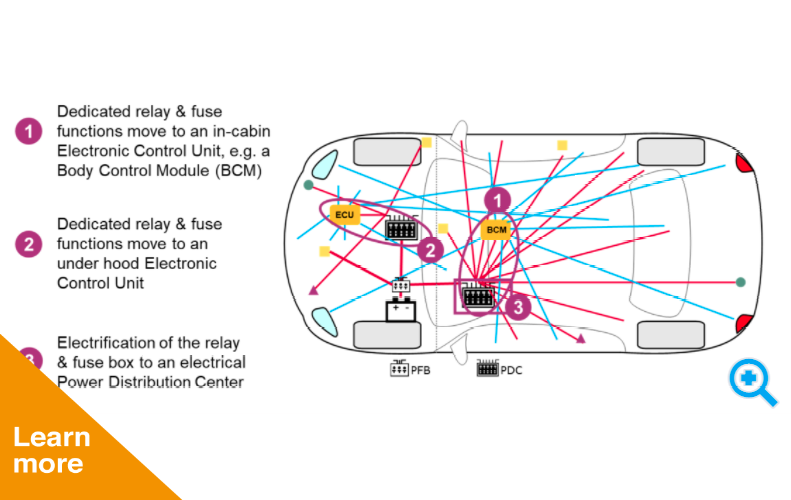One of the major trends shaping power distribution in today’s cars is the replacement of relays and fuses with semiconductors. But this is not as straightforward as it sounds.
Modern cars feature numerous advanced driver assistance systems (ADAS). All safety-critical ADAS applications must be designed for high availability. Automated driving functions are even more challenging to implement as these introduce fail operational requirements for the power distribution system.
Overall, this calls for “dependable power”, i.e. the failure-tolerant supply and distribution of energy throughout the vehicle. The need for dependable power has a significant impact on the power distribution system, requiring designers to replace relays and fuses with semiconductors. These have the advantage of improved system reliability thanks to additional diagnostics functions and enhanced protection features.
Reliability-critical functions started moving from the relay and fuse box, also known as the power distribution center (PDC), to the BCM or ECU a decade ago. Today, one of the major challenges for designers lies in optimizing the wire harness by reducing its high cost, length, weight and complexity. One way to do this is to electrify the PDC with semiconductors and thus create an electrical power distribution center (ePDC). This can be positioned at any location in the vehicle, even in non-accessible areas. This flexible positioning in the car means that these boxes can be distributed across a decentralized power distribution system, thus optimizing the wire harness configuration. This gives ePDCs a significant advantage over relay- and fuse-based PDCs as these are restricted to easily accessible areas in order to limit labor cost in the event of a malfunction.
Company: Rutronik










